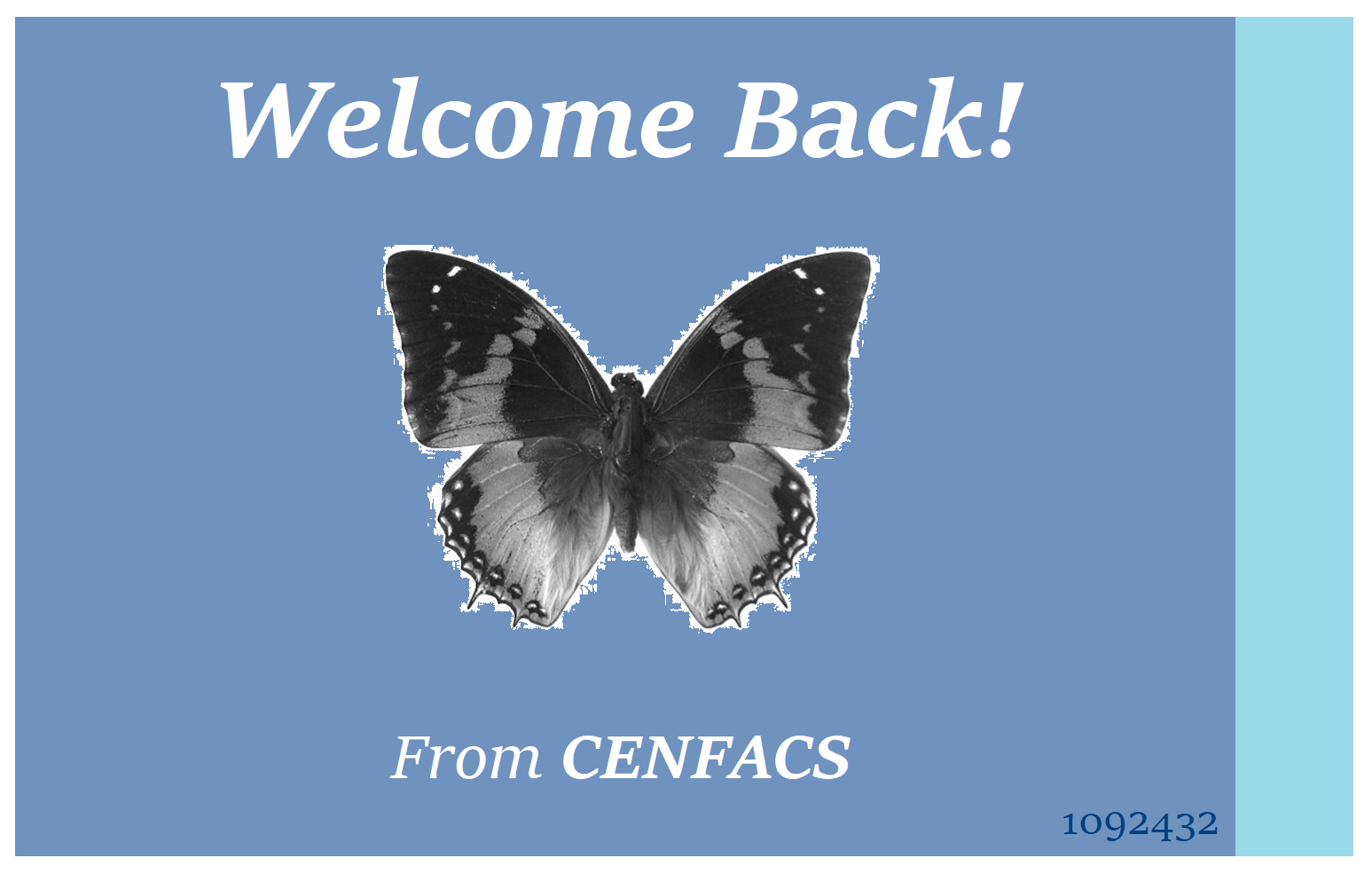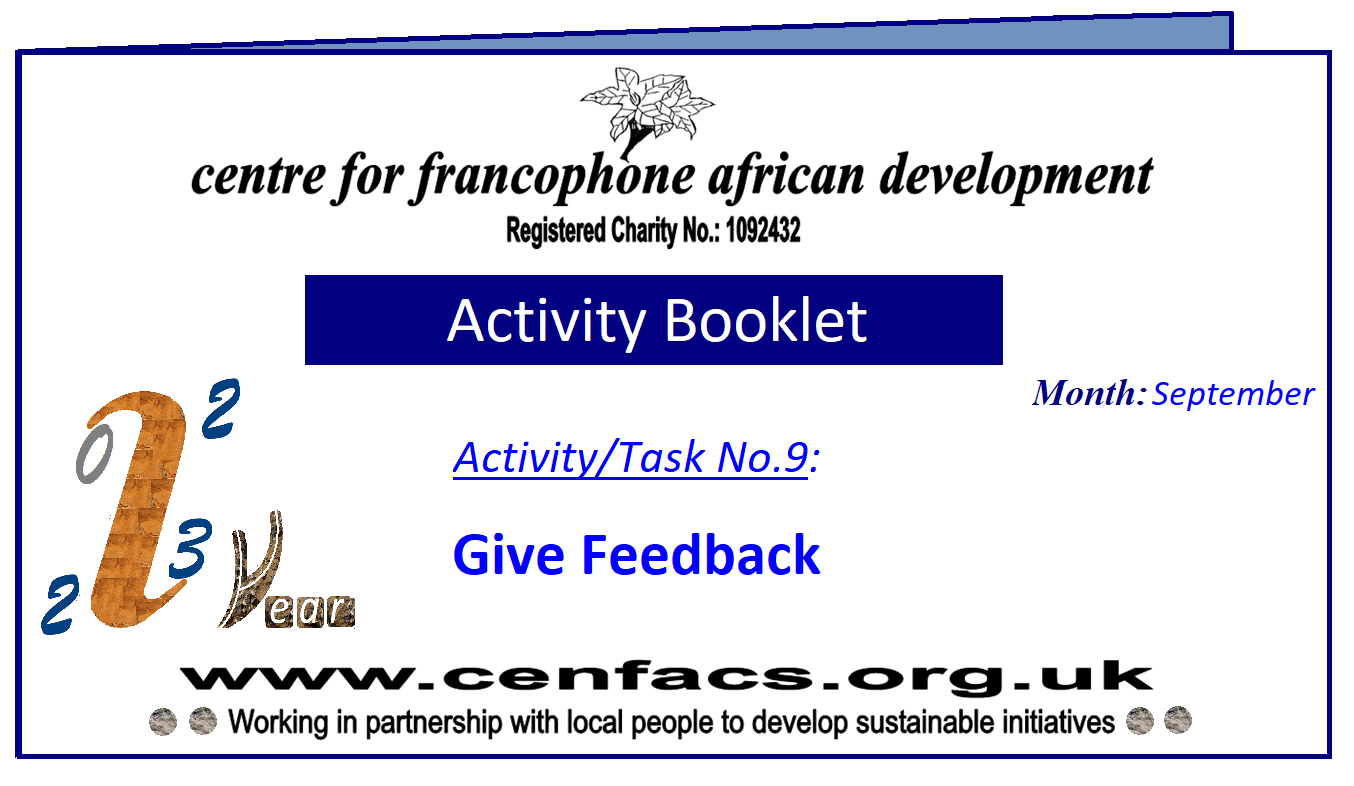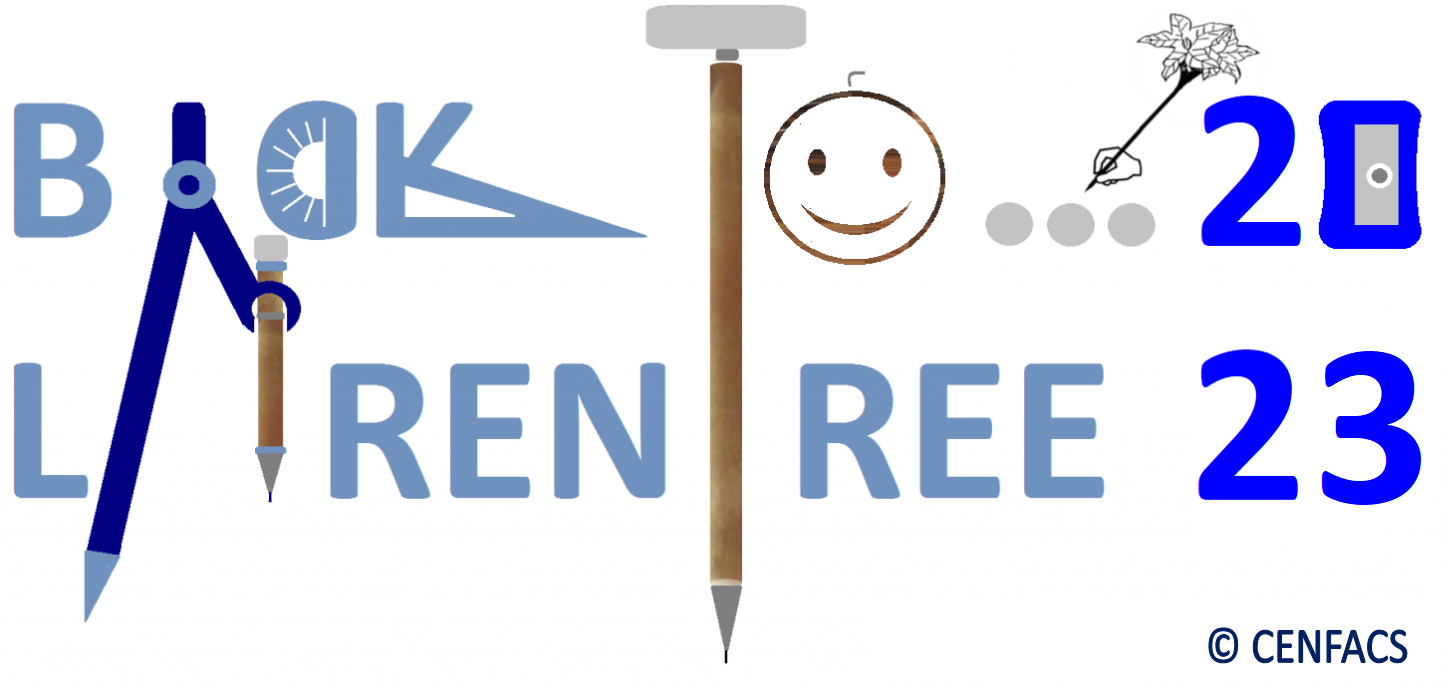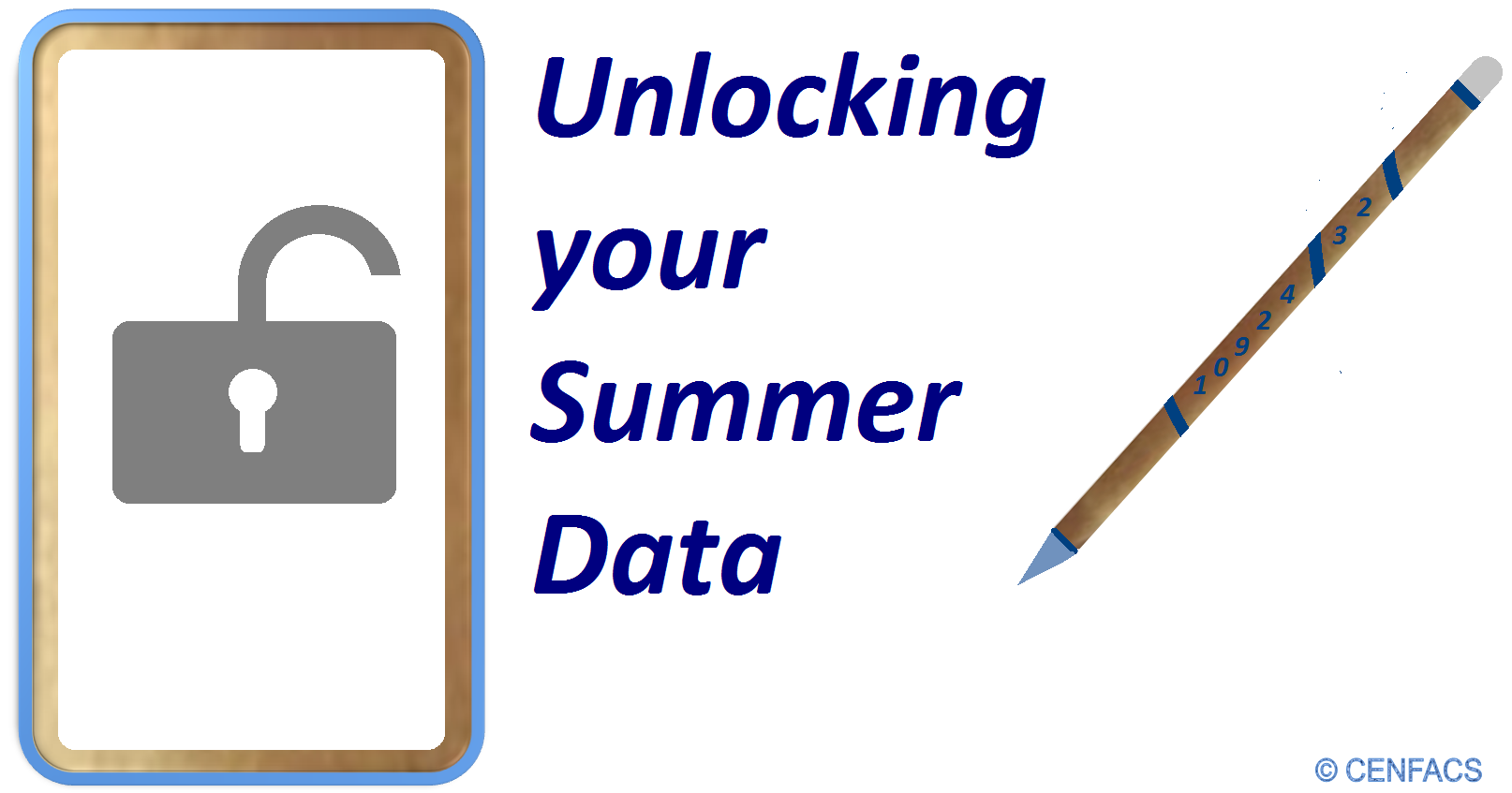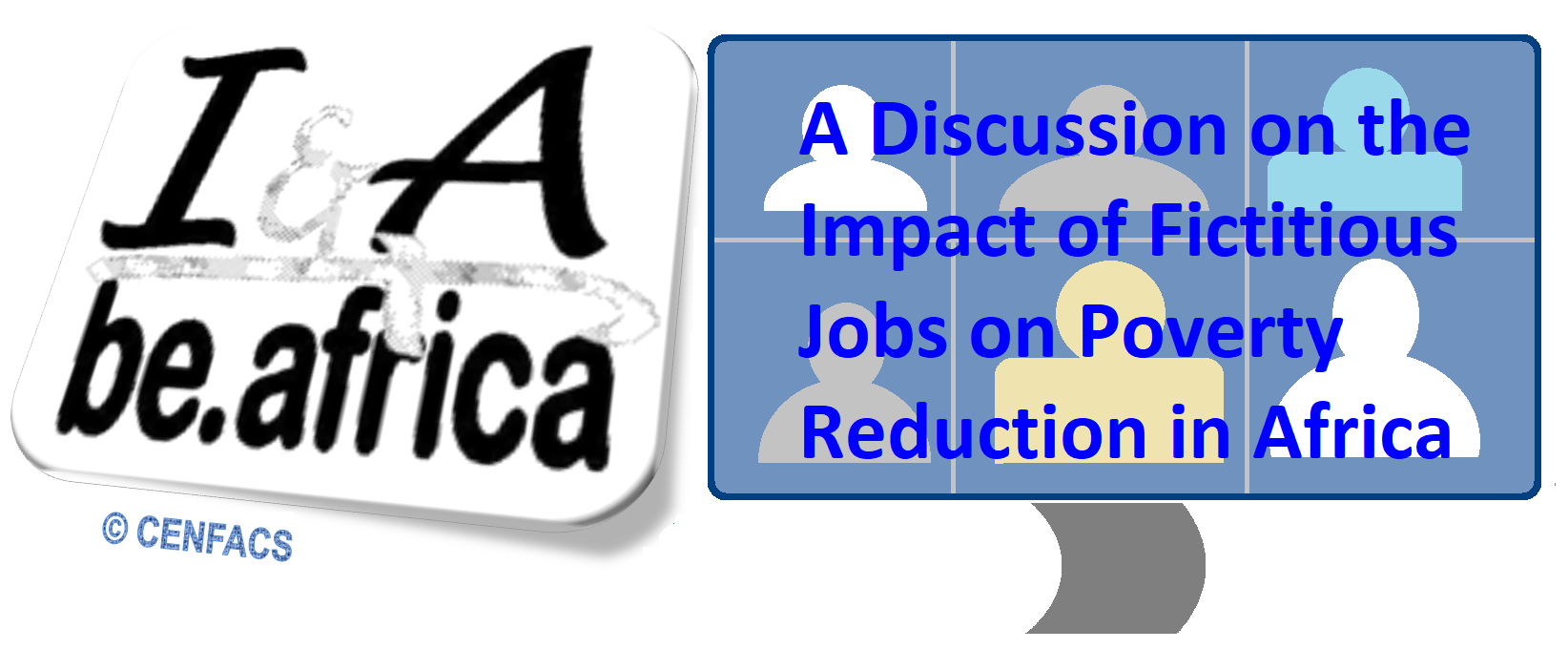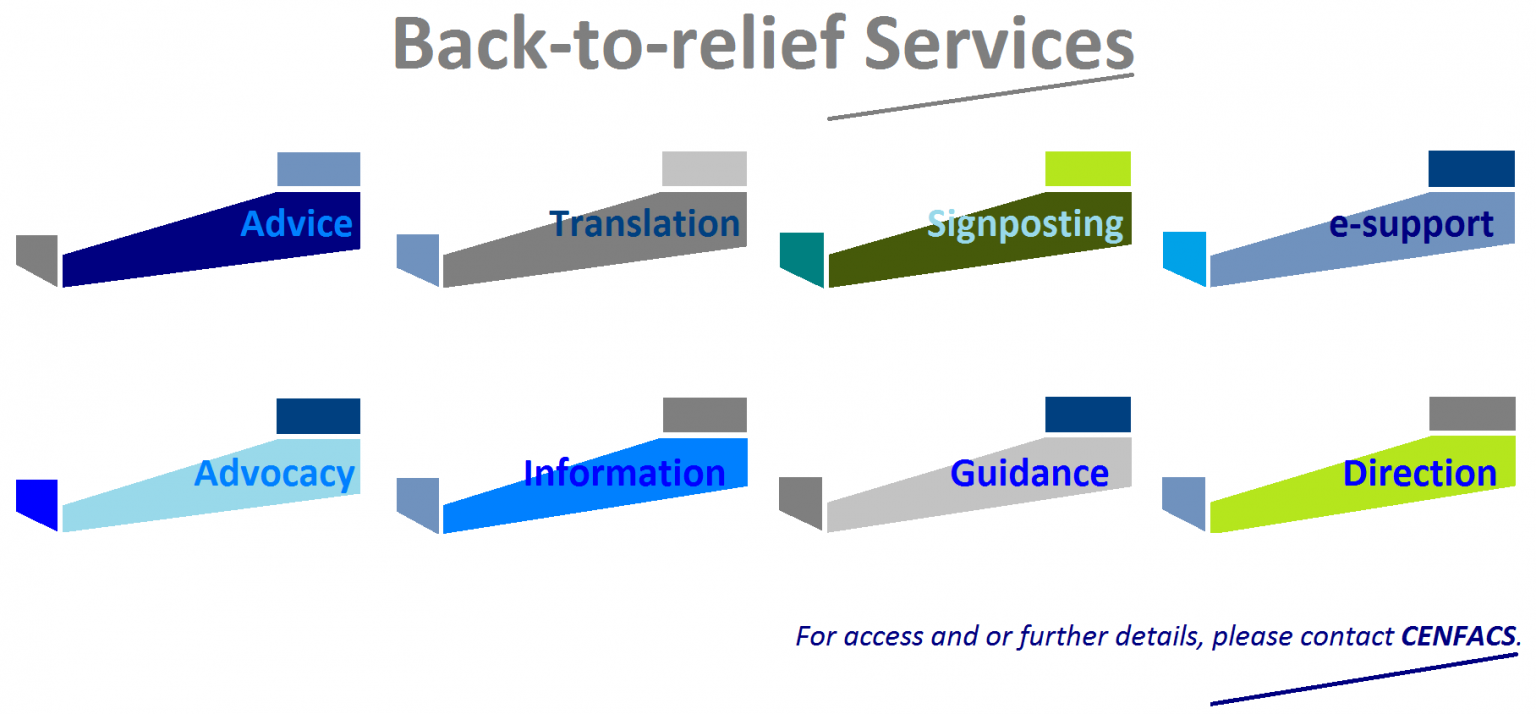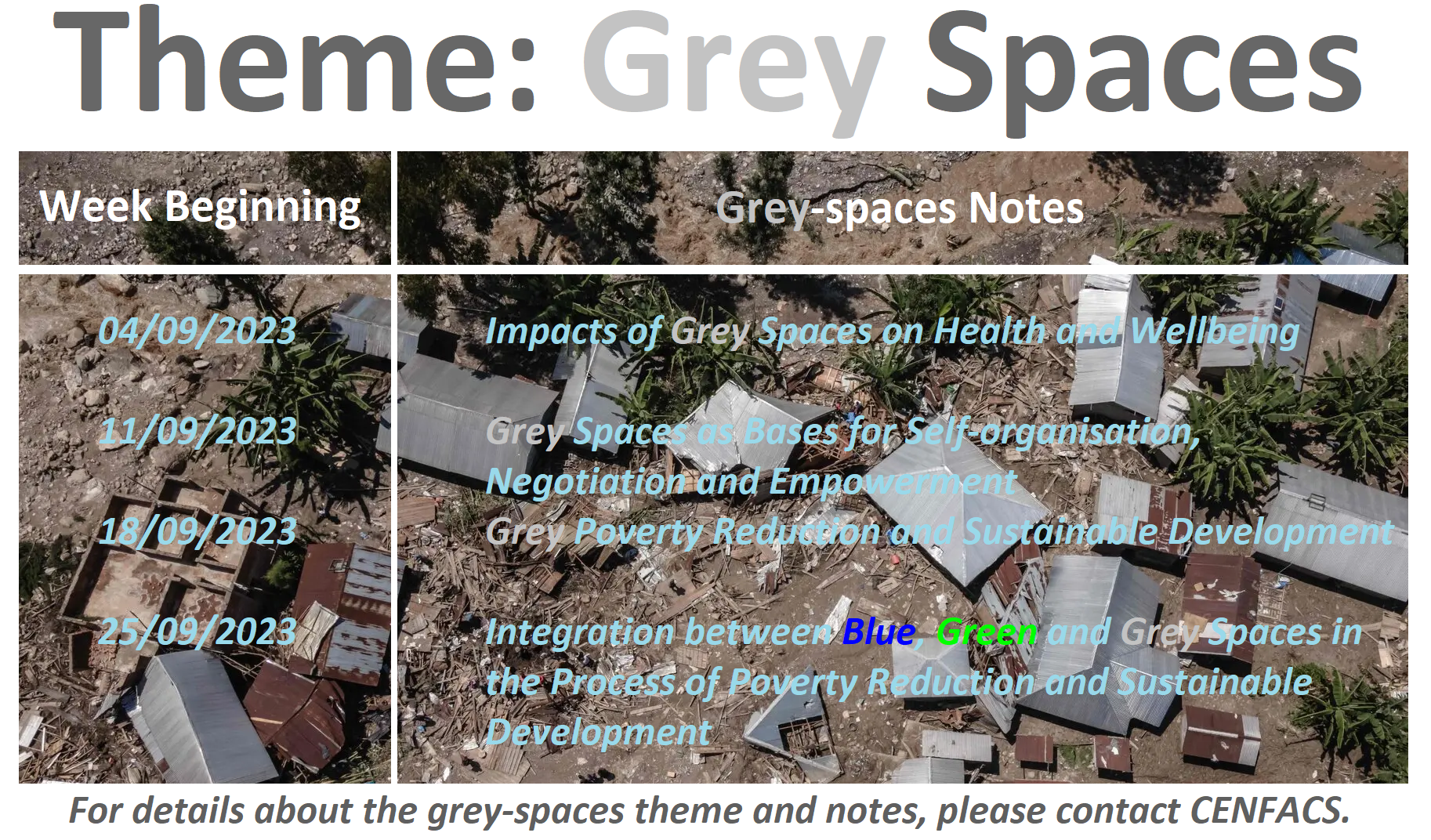Welcome to CENFACS’ Online Diary!
06 September 2023
Post No. 316
Welcome back Message
Before starting the contents of the blog and post of this first Wednesday of September 2023, we would like to welcome back all those who are returning this month.
We are welcoming back the following:
∝ Our users, supporters, members, audiences and other stakeholders who came back from Summer break and school holiday
∝ Those who are or have been working during the Summertime
∝ Those who lost touch with us for various reasons and would like to come back again.
This welcoming back message also applies to those using or helping or supporting our UK and Africa Development programmes.
Welcome back to all of you for a happy and healthy return!
The Week’s Contents
• Back-to-relief Programme 2023: Programme for Pre-autumn Season 2023
• Goal of the Month: Reduction of Back-to-school Poverty
• Activity/Task 9 of the Influence (‘i’) Year and Project: Give Feedback
… And much more!
Key Messages
The key message from our weekly communication and menu, which is often made of three courses, is as follows.
• Back-to-relief Programme 2023: Programme for Pre-autumn Season 2023
Back-to-relief Programme is a set of related activities and services with an aim of reducing poverty (particularly back-to-school poverty but not exclusively) amongst multi-dimensional poor children, young and families (MDPCYPFs) by working with them to meet their needs after summer break and/or school holiday so that they can start September 2023 without or with less hardship.
The programme is made of a number of supportive elements like the following:
Capacity and skills development, advice, advocacy, translation, information, guidance, support to child educational needs in Africa, signposting, etc.
The programme is generally run around September and can be extended to October depending on the needs and demand in the community and available resources.
• • September: Advice- and Guidance-giving Month
We run Advice service as part of our activities throughout the year. However, Advice is CENFACS’ main theme in September. Because that, it is more pronounced in September compared to other months of the year. In other words, we invest more resources in advice in September than at any other times of the year.
We provide generalist advice to both individuals and organisations as mentioned above. We also give specialist advice on matters relating to the fields of poverty reduction and international development.
Where both individuals and organisations need specialist advice in other matters than poverty reduction or international development, we guide them. We can as well signpost beneficiaries to other organisations/individuals providing specialist advice if beneficiaries’ request for advice is beyond or outside our advice capacity and resources.
Advice and Guidance can be given in the context of Back-to-Relief Programme and outside this context. When Advice and Guidance are given in the context of Back-to-Relief Programme, they become constituent part of this programme like other elements making this programme.
The programme is particular in its kind as it targets certain types of returnees and what these returnees may need.
• • The particularity of this year’s programme
The Back-to-relief 2023 programme is designed to include the needs of these returnees. It is also conceptualised to anticipate any changes of economic situation. The current economic is that the economy in the UK is experienced high inflation and high interest rate.
According to the Office for National Statistics (1),
“The consumer Prix Index (CPI) rose by 6.8% in the 12 months to July 2023, down from 7.9% in June”.
A CPI of 6.8% is still more than three times higher than 2% target.
As to the interest rate, ‘theguardian.com’ (2) argues that
“A fresh poll of economists by Reuters predict the UK interest rates will peak at 5.5% when the Bank of England will revisit its monetary policy on 21 September 2023”.
Additionally, prediction of recession in the third quarter remains.
Our Back-to-relief 2023 programme will be delivered in this economic context of high inflation and high interest rate. These two factors affect the real household disposable income and the cost of living. The latter is higher at the moment. Besides that, we shall factorise in this programme other events (like the lingering effects of the coronavirus, changing climate, geo-economic crises, etc.). This year’s programme has been specifically designed to take account of these factors.
• • Types of returnees who may need this year’s programme
At the end of this Summer 2023 and during this September, we may have three types of returnees, who are:
√ MDPCYPFs who already planned what they want to do and how they will continue to manage the above-mentioned factors and their other aspects of life
√ MDPCYPFs who already planned their start of September and the end of Summer 2023, but they may need some help to carry on with their plan or family project
√ MDPCYPFs who could not plan because they could be overwhelmed by the impact of these factors or poverty and may need advice or guidance in terms of coping strategies during this September.
• • What these returnees may need
Because we are dealing with MDPCYPFs, who are supposed to be poor or in need, they could ask for some support in the form of information, advice and guidance to cope or manage their problems.
They could even require further advisory support during this September as many of them would face the pressure linked to the end of Summer and the start of Autumn, in particular those families having to deal with the financial pressure of the start of the new academic year for their children.
They need advice and guidance to cope with poverty in which they are already, to deal with the on-going cost-of-living crisis and the financial pressure to send back to school their children for those having children at schooling age. This is why we have assembled and blended activities and services (that is; the Back-to-relief Programme) to work with them.
For more details on CENFACS’ Back-to-relief Programme, please read the details under Main Development section of this post.
• Goal of the Month: Reduction of Back-to-school Poverty
Our goal for the month of September 2023 is the reduction of back-to-school poverty. To deliver this goal, we need to understand it and work with those who may likely experience back-to-school poverty.
• • What is back-to-school poverty?
Back-to-school poverty is the inability to afford the educational requirements of the start of the new school year. It is the incapability or incapacity for parents and carers to meet the basic life-sustaining needs of education for their children in terms of purchasing school items (such as uniforms, clothes, books, electronics, etc.) and providing the basic infrastructures and necessities (whether it is at home or outside) to support the education of their children.
This incapacity can include other expenses that compete against or with educational materials; expenses that are school fees, living expenses to start a new school year, transport cost to travel to schools, food, a place to study at home, family relocation, adequate meal to study, a proper bed to sleep well, health costs, basic healthcare and hygiene at home, etc.
As Walden University (3) puts it,
“It [poverty] pervades multiple areas of life – and for parents whose income is below the poverty line, it often means sending their children to school hungry, along with other disadvantages, both academic and otherwise”.
Back-to-school poverty can be tackled. This is why during this September we will be working with those suffering or may suffer from back-to-school poverty so that they can find the tools and means to navigate their way out of this type of poverty.
• • Back-to-school Clinics to help tackle back-to-school poverty
CENFACS does not provide money to tackle back-to-school poverty; CENFACS can however work with parents of children going back to school in session whereby they can have social prescription or the tools to navigate their way out of the back-to-school poverty.
CENFACS can work with the community through its advice service and other services so that the members of its community can find their way out of this type of poverty. Particularly and specifically, CENFACS’ Back-to-school Clinics can work with them to tackle back-to-school poverty in the following ways:
√ Reducing the competition between living expenses and educational expenses within the household budget coverage
√ Exploring potential supporters to help them with educational costs for their children education
√ Budgeting with them their living expenses for a better start of the academic year
√ Examining together any issues relating to transport cost to travel to schools or places of education while advising them on net zero CO2 emitting means of transport
√ Discussing ways of saving on energy use, food and meals relating to educational purposes
√ Looking into school catchment area for those looking for a place to study
√ Working on a feasible and realistic plan when studying at home
√ Supporting family relocation matters (e.g., accommodation in the vicinity of schools and working places for parents)
√ Working with them to tackle hygiene poverty to keep children better engaged with their education and learning
Etc.
The above is our poverty reduction goal for this month, which we are asking to our audiences and supporters to help or promote.
• Activity/Task 9 of the Influence (‘i’) Year and Project: Give Feedback
The 9th Activity or Task of our ‘i’ Year and Project is about giving or offering your feedback to those in need.
Feedback is one the ten influencing skills listed by Janice McBrown (4) who suggests to offer feedback to the other person about what you see, interpret, hear as well as what you feel and intuit. Elicit feedback from others to develop your own self-knowledge and your impact on others. But, what is influencing and what is feedback?
• • Understanding both Influencing and Feedback
The definition of influencing that one can use in the context of giving a feedback can be the one provided by Susan Jeffers; definition quoted by Janice McBrown (op. cit.). For Susan Jeffers, influencing is
“Not the ability to get someone to do what you want them to do, it is the ability to get yourself to do what you want to do”.
Our understanding of feedback comes from what Madeline Miles (5) argues about it, which is
“Feedback is a sign of care”.
Madeline Miles (op. cit.) explains that feedback can be a sign that someone is personally interested in your growth and development.
• • Putting Feedback in Practice
If you are interested in or impact investing in the growth and development of those in need, you can show them how much you care about their problems. Your feedback could be a constructive one or an appreciation or recognition in engaging with those in need. As suggested by Madeline Miles (op. cit.), to provide a good feedback, you may need to have a goal of your feedback, to lead with empathy and kindness, to be clear and direct, to listen carefully and offer support.
One can use what it has been said about influencing and feedback to give feedback to those in need.
The above is the Activity or Task no. 9 for the ‘i’ Year/Project for those who are interested in carrying it out. For those who want any clarification of any aspects of the activity or task, they can contact CENFACS.
Extra Messages
• Happiness and Healthiness Journal – It is time to share the contents of your creative activity
• Unlock Your Summer Holiday Data and Tell Your Story
• CENFACS’ be.Africa Forum e-discusses the Impact of Fictitious Jobs on Poverty Reduction in Africa
• Happiness and Healthiness Journal –
It is time to share the contents of your creative activity
After six weeks of journaling, it is time to start sharing the contents of your journal. Indeed, during the last six weeks of Summer, some of you have been journaling on one of the six predictors that explain happiness and healthiness, which are: income, social support, healthy life expectancy, generosity, freedom, and trust.
As previously said, the contents of these journals could be shared with the community at the end of Summer 2023 as a Summer memory or souvenir. Although Summer is not yet over, those who have created their Happiness and Healthiness Journal can start to share with the community. However, in order to share their contents they may need a strategy and tools as well as to monitor their social performance.
• • Content Sharing Strategy
You need to plan or strategize yourself the way in which you want to share your content. In other words, you need to have a process of or planning and conducting some content sharing tasks.
• • Content Sharing Tools
You also need implements or instruments to deliver your content to us and others.
For example, if you want to share you content online you can refer to online tools to do it. Let say you use Twitter. You can use Twitter feed to share your content to a range of platforms. You can go online to share your content. You can use online tools to do it. You can share it multiple times. You need to have social sharing plugins on.
• • Monitoring Your Social Performance
You can monitor your performance in content sharing. For example, you can monitor the traffic you get to your posts relating to Happiness and Healthiness Journal, whether it is online or offline.
Please share with the community your experience of happy and healthy Summer through the contents of your journal to help build a better Summer holiday experience and memory.
• Unlock Your Summer Holiday Data and Tell Your Story
Throughout our July and August 2023 communications, we have been asking everybody to store and keep their Summer data so that when we all return in September, we can report back or share parts of our Summer experiences that are shareable and spreadable.
Now some of you are back, we can try to feedback our poverty-reduction and development experiences of using Happiness and Healthiness projects and of any other similar activities over the Summer period. To feedback, you may need ways of unlocking your summer data.
• • Ways of Unlocking Your Summer Data
To unlock your Summer data, one can proceed with the following:
σ Have your holiday records update, complete and accurate
σ Know where your data is stored or sitting (e.g., mobile phone camera, laptop, tablet, etc.)
σ Extract your data including images from sources where they are stored
σ Use technology or manual means to unlock them
etc.
• • What You Can Report Back or Story You Can Tell
Apart from the above-mentioned experiences, one can feedback any creations, any other experiences, any community practices and any volunteering stories, if they volunteered, they had over the last two months.
One can report back a personal Summer experience as well.
Likewise, one can combine their Summer journal (about predictors that explain happiness and healthiness) and this reporting back exercise into a single or all-in-one Summer report.
For those who managed to store their Summer data and who would like to share their experiences, this is the time to start unlocking their Summer data and preparing to tell their Summer story.
• • The Good Thing about Sharing Your Experiences
Sharing your experiences with us helps to keep the CENFACS Community active, engaged, connected and grow together. It also contributes in carrying out prescriptive analytics that enables to use smart data discovery capabilities to predict market developments and trends to help relieve or possibly end poverty and hardships within our community and beyond.
Please share your poverty-relieving and development experiences and contents with us; parts of your experiences and contents that you think are shareable and perhaps spreadable.
Should anyone have any concern about data protection issues regarding the sharing of their information, please let CENFACS know. We will be able to assist.
• CENFACS’ be.Africa Forum e-discusses the Impact of Fictitious Jobs on Poverty Reduction in Africa
How Can Africa-based Sister Organisations Help?
Fraud data analytics show that Africa is losing millions of money to fictitious or ghost employees. Administrations in Africa, particularly the public ones, are losing a lot of money because of fictitious or ghost employees or workers.
• • Ghost Worker Payroll Scams at the Heart of Africa’s Public Finances
Global Payroll Association (6) states that
“An audit report revealed that the Democratic Republic of Congo [DRC] loses at least $800 million annually to ghost worker payroll scams”.
Likewise, the DRC’s Inspectorate General of Finance (7) reports that
“The monthly loss of earnings [as a result of payment irregularities involving tens of thousands of non-existing workers] suffered by the treasury is 148.999.749.440.95 Congolese francs (or 662 million dollars)”.
Loss of any money because of fictitious employment is a problem in Africa and in places where there is huge number of poor people and where money is badly needed to reduce poverty and enhance sustainable development. It is a serious issue if one knows what fictitious worker means.
According to Nagel and Associates – Forensic and Investigative Accounts (8),
“A fictitious employee is a person who is on the company’s books but does not actually work for the organisation”.
So, money that could have been allocated to deserving causes (like poverty reduction) and other development agendas (such as sustainable development) is sent to a ghost at an address or account that the fraudster will have access to. This behaviour can hamper any efforts to reduce poverty and to mitigate climate change. Those in need find themselves defrauded of the money that could have helped them to navigate their way out of poverty.
• • What We Can Do Together about Ghost Scams
CENFACS’ be.Africa Forum is discussing the ghost worker payroll scams in Africa. In particular, the forum is looking at how Africa-based charitable organisations working on employment investigation and payroll fraud can help their local administrations as well as communities that are the victims of the ghost scams disease.
Areas of discussion include the following:
Ways of improving communication channels to reduce or end the phenomenon of ghost workers, good practices in book-keeping and employee management, advocacy to deal with ghost scams, cure against faked bank accounts, training of administrators in the area of fictitious employment, technologies relating to payroll, digitalisation of means of payments, the use of artificial intelligence in the area of payroll, etc.
Those who may be interested in this discussion can join in and or contribute by contacting CENFACS’ be.Africa, which is a forum for discussion on matters and themes of poverty reduction and sustainable development in Africa and which acts on behalf of its members in making proposals or ideas for actions for a better Africa.
To communicate with CENFACS regarding this discussion, please use our usual contact details on this website.
Message in French (Message en français)
Revue du Rendement Financier 2022-2023 du CENFACS (Un extrait de la Revue Annuelle 2023 du CENFACS)
Voici le résumé de nos recettes et paiements pour l’exercice se terminant le 30 juin 2023.
Après que nos fonds de trésorerie se sont redressés au cours des six premiers mois du dernier exercice (2021/2022) et ont repris le chemin de la croissance au cours des six mois suivants de ce même exercise, ils ont poursuivi leur tendance à la hausse.
Pour cet exercice (2022/2023), nous avons enregistré une augmentation nette de 12% de nos fonds de trésorerie. Cette augmentation a été possible car les économies réalisées sur les comptes de paiement (sur des éléments tels que le réseautage et les réunions en personne, le transport et les voyages, les timbres-poste, la sensibilisation, l’impression et la photocopie, et le budget à l’étranger) ont commencé à porter leurs fruits.
Du côté des paiements, la hausse du coût de la vie s’est traduite par une augmentation de nos coûts, à l’exception du compte d’impression et de photocopie. Comme nous étions dans la période de levée des restrictions du coronavirus liées au contact physique, nous avons repris certaines activités liées aux contacts physiques.
En conséquence, les dépenses et les postes suivants liés aux activités aux contacts physiques ont augmenté: transport et voyages, papeterie et livres, et timbres-poste. Nos coûts de communication ont également augmenté; reflétant notre désir de rester sur la bonne voie avec les parties prenantes et de garder nos membres engagés dans notre cause caritative. La période inflationniste obstinée a également signifié pour nous une augmentation des coûts de location et des services publics.
Nous avons continué d’investir dans des moyens de travail en ligne et virtuels pour réaliser des gains d’efficacité dans l’ensemble du CENFACS. Les investissements supplémentaires réalisés ont commencé à apparaître progressivement et timidement, au milieu des effets persistants du coronavirus et de la crise persistante du coût de la vie. Nous avons continué à ressentir la pression de la crise du coût de la vie dans la gestion de nos activités alors que nous parvenions à contrôler les effets persistants du coronavirus.
Du côté des collectes de fonds et des recettes, le défi de recueillir les fonds nécessaires pour répondre au niveau des besoins de la communauté demeurait. Cela pourrait s’expliquer en partie par l’effet cumulatif des effets persistants du coronavirus et de la crise durable du coût de la vie qui a continué de créer de l’incertitude pour de nombreux bailleurs de fonds individuels.
Nous devons également admettre que la campagne de collecte de fonds pour nos programmes de restructuration post-coronavirus et de construction de meilleurs programmes a encore du mal à générer le financement nécessaire pour répondre aux besoins de la communauté.
Malgré ces facteurs d’entrave ou cette lutte, nos fonds de trésorerie ont maintenu leurs tendances ascendantes comme indiqué ci-dessus. Sur le plan comptable, nous avons réussi à augmenter nos recettes. Nos recettes soulignent presque une augmentation de 7%. Cette augmentation et les économies réalisées sur les paiements ont donné lieu à un solde net positif de notre compte des recettes et paiements pour l’exercice.
Nous espérons que les fruits des programmes susmentionnés apparaîtront pleinement au cours du nouvel exercice (2023/2024) et au-delà. Nous pouvons également nous attendre à ce que le rebond de nos fonds de trésorerie se poursuive régulièrement et soit encore perceptible au cours de l’exercice 2023/2024.
A l’issue de cet exercise financier 2022/2023, nous tenons à remercier tous nos sympathisant(e)s pour leur engagement indéfectible et leur soutien percutant pour nous avoir aidé à exprimer et à porter une fois de plus notre message de réduction de la pauvreté dans le monde du développement, en particulier au moment très inquiétant des effets persistants de la pandémie de coronavirus, de la crise durable du coût de la vie et de la crise climatique qui subsiste.
Merci beaucoup d’avoir fait de 2022-2023 une autre année mémorable et méritoire au sein de CENFACS et d’avoir été là aux côtés de ceux ou celles qui souffrent.
Main Development
• Back-to-relief Programme 2023: Programme for Pre-autumn Season 2023
The following covers our programme for this pre-autumnal season:
∝ Back-to-relief Projects
∝ Open Days under Back-to-Relief Programme
∝ Support for Crises-impacted Children in Africa
∝ Back to the Upkeep of the Nature this September 2023
∝ Back to Advisory Support this September 2023
∝ Back to the Upkeep of the Nature with the Theme of “Grey Spaces”
∝ Grey spaces-focused Note for Week Beginning 04/09/2023
Let us briefly explain these contents.
• • Back-to-relief Projects
As previously mentioned, most of our projects and programmes are organised to take into account the lives and needs of our beneficiaries, supporters as well. Some of them will be back this week after Summer break. They are back for the New Academic Year and New Relief, year for which we have prepared projects and programmes to work with them so that they can meet their existing, challenging, changing and emerging needs – the back-to-relief projects and programmes.
Amongst the back-to-relief projects and programmes, there are these two ones: Open Days and Support to Children.
• • Open Days under Back-to-Relief Programme
Since we set up hybrid way of delivering service as a legacy of the coronavirus, we continue to operate virtually/online and in-person. There are reasons we operate both ways.
One of these reasons is that it is not always easy for people, especially those who have some physical handicaps and parents with small kids, to in-person move and meet service providers if this service provision cannot physically come to them even if the need is pressing.
Where we are in a position to in-person organise the service requested, users can in-person access the given service prior to arranging an appointment.
So, our open days will be both virtual and in-person. They are virtual days to enable those in need but cannot move physically to access services. They are in-person for those who prefer in-person open days. For the latter ones, they need to book an appointment for in-person open day to happen.
• • • What are virtual and in-person open days?
Virtual and In-person Open Days (VIODs) are a back-to-relief initiative organised by CENFACS during this September 2023 to enable people in need to access our advice service and other similar services in order to reduce or end poverty linked to their situations or conditions of life.
• • • How VIODs work
Our Virtual Open Day, which will be every Fridays of September 2023, will be held from 10 am to 2 pm.
You can access VODs by contacting CENFACS.
You do not need to register with us.
Every Fridays, you can either email or phone or even text between 10 am and 2 pm.
Our In-person Open Day, which will also be every Fridays of September 2023, will be held from 10 am to 2 pm. An appointment needs to be booked to have in-person open day.
For more on CENFACS’ Virtual and In-person Open Hours and Days as well as how they work, please contact us.
• • Support for Crisis-impacted Children in Africa
Another back-to-relief initiative for this September 2023 is Support for Crisis-impacted Children in Africa, particularly the Children of Conflict-stricken and Climate Change-affected Areas of Africa in this September and beyond. This initiative relates to four humanitarian appeals, which are:
√ Africa’s Food Crises-impacted Poor Who Needed Influence
√ Children in the Horn of Africa Who desperately Wanted to Avoid Famine
√ Children in Need in the Eastern Part of the Democratic Republic of Congo
√ The Polycrisis-impacted Children of East Africa Who Needed Influence.
These appeals were launched under the Light projects.
The people on whose behalf these appeals were made include children. Children were amongst displaced persons, the victims of conflict and food insecure as part of appeal beneficiaries.
While one can still ask the progress made to save and rebuild these crises-impacted lives, one can also question about the support that the children affected by these crises are receiving and/or received, especially at this challenging time of the cost-of-living crisis.
This questioning is relevant as we are in September when a new school or academic year starts in many parts of the world and of Africa. This questioning is even founded at this time when many parents will struggle to provide school uniforms and equipment to send their children back to school.
Parents and children have another battle where school infrastructures and buildings were destroyed because of events like wars and natural disasters, or simply occupied as refuges by the war victims.
These negative effects are even greater for children from poor places in developing countries (like of Africa) where educational opportunities have been denied to many of them regardless of the current global cost-of-living crisis.
So, during this September we will be working on this back-to-relief initiative to explore ways of keeping education alive for these unfortunate children living in those parts of Africa in crisis. Through this initiative, we will help get education and learning back on track for these children.
For further details about this initiative, please contact CENFACS.
• • Back to the Upkeep of the Nature this September 2023
September is also the month we resume our advocacy work on the upkeep of the nature. Normally, this advocacy starts from the protection and care of animals in Africa from illegal killings, extinction and poaching. In the last week of September 2023, we shall focus on saving endangered insects and invertebrates through our new initiative called ‘Niamankεkε’ (that, Nurture Insects via Adaptive Management for Action on Nature that Keeps the Endangered as Key to our Environment). It is an advocacy for the world’s smallest creatures.
Niamankεkε is a new advocacy project planned by CENFACS to help protect critically endangered insects and invertebrates in Africa. Insects like Brenton Blue Butterfly, Chlorocypha spp, Eriksson’s Copper, Pheidole spp, African Dung Beetle, etc. are endangered species. The ‘Niamankεkε’ project, which has already kicked off, will help us to advocate for a safe life for insects and invertebrates.
Another initiative featuring this September 2023 is our advocacy on lands which will be conducted under the theme of “Grey Spaces“. Grey Spaces take stock of the advocacy on waters which we worked on since September 2019.
In September 2019, we worked on the Protection of the Oceans (particularly the waters surrounding Africa and the rivers and lakes in Africa). In September 2020, we carried on with the advocacy on waters through the theme of “Blue Spaces”. In September 2021, we had a 3-week work on sea level rise as notes for the “Blue Spaces”. Last September, we had three weeks and five days of advocacy work on safe, inclusive and accessible green spaces.
This September 2023, we are continuing our space analysis and advocacy with a new theme which is “Grey Spaces” and space implications for poverty reduction and sustainable development. The notes for this new advocacy which are on “Grey or Gray Spaces” started from the 4th of September 2023.
To conclude the month, we will have some e-discussions on circular economy.
Briefly, Back to the Upkeep of the Nature this September 2023 will include the “Nyamankεkε” advocacy project, access to natural spaces with the theme of “Grey Spaces” and an e-discussion on circular economy.
• • Back to Advisory Support this September 2023
As above mentioned, Advice is CENFACS’ main theme for September. We provide advice to both individuals and organisations.
• • • Advice Service for Individuals
Some of you are aware that most of CENFACS services in the UK are designed to support multi-dimensional poor children, young people and families (CYPFs). After the summer break, many of them will come back to start their life again. From September onward, they will go back to school for CYPs and to work and training for parents and guardians.
They may need or ask for support to restart or look for occupational opportunity or even just resume their routine activity in September. Their needs could include the following:
∝ Finding a new school or a nursery for children
∝ Registration to health services
∝ Finding accommodation or relocating
∝ Accessing training opportunity or employment
∝ Looking for a new occupation to deal with the economic effects of the cost-of-living crisis
∝ Finding help to adjust their life after Summer break or any period of inactivity
∝ Looking for direction to overcome the cost-of-living crisis
Etc.
We can provide advisory support to them. Where our capacity is limited, we can refer and/or signpost them to relevant specialist services and organisations to help them meet their needs.
We do it under CENFACS’ Capacity Advice Service which was established since 2003 (through CENFACS’ Capacity Advice and Development project for Croydon’s African and Minority Ethnic People) to help individuals gain various types of help.
The types of help we provide include:
√ Translation (English to French and vice versa)
√ Interpreting
√ Generalist advice
√ Guidance
√ Signposting
√ Referral
√ Advocacy
Etc.
As we are in a digital era, we adapted the provision of the above listed help while still retaining its essence. Two years ago, we introduced leaves in this service to make it Leaves-based Advice Service.
You can contact CENFACS for the range of issues included in this service and to find out if your problem can be dealt with.
Regarding Translation service, we would like to remind everybody that the 30th of September 2023 is the International Translation Day. For those who need a translation service, they can contact us on the day for translation. But they need to let us know at least three days before so that we can include their request in our plan.
• • • Advice Service for Organisations
The same advice service applies to overseas and Africa-based Sister Organisations.
Under our international advice service, we can advise them on the following matters:
√ Capacity building and development
√ Project planning and development
√ Poverty reduction within the context of Africa Continental Free Trade Area
√ Not-for-profit investment and development
√ Absorption capacity development
√ Fundraising and grant-seeking leads
√ Income generation and streams
√ Sustainable development
√ Monitoring and evaluation
Etc.
Again, where our capacity to advise is limited, we can refer and or signpost them to relevant international services and organisations. This advisory support for Africa-based Sister Organisations is throughout the year and constituent part of our work with them. However, they can take advantage of our advice-giving month to seek further advice on any of the above matters.
To access advice services, please contact CENFACS. To register for or enquire about advice services, go to www.cenfacs.org.uk/services-activities.
• • Back to the Upkeep of the Nature with the Theme of “Grey or Gray Spaces”
The following will help deal with this theme: theme statement and key notes covering this theme.
• • • Theme statement
The theme of “Grey Spaces” under the back to the upkeep of the nature (which is part of our back-to-relief programme) is about making grey spaces (and those in need populating grey spaces) to benefit from blue and green spaces in a safe, inclusive and accessible way; in doing so using these grey spaces to help reduce poverty and enhance sustainable development. There are two aspects in this statement.
The first aspect of this statement is about the benefits of grey spaces from blue and green spaces. The second aspect of this statement is what we called grey poverty reduction and grey sustainable development.
In labelling poverty reduction and sustainable development grey, we are trying to look at the extent to which the “Grey Spaces” can help people in Africa and elsewhere to alleviate or escape from poverty. This is what one can call “grey poverty reduction “. This is despite criticism about these spaces.
To enable this process to happen, we are recalling the United Nations Biodiversity Agreement (9), particularly its Goal 12 which is:
“Significantly increase the area and quality and connectivity of, access to, and benefits from green and blue spaces in urban and densely populated areas sustainably, by mainstreaming the conservation and sustainable use of biodiversity, and ensure biodiversity-inclusive urban planning, enhancing native biodiversity, ecological connectivity and integrity, and improving human health and well-being and connection to nature and contributing to inclusive and sustainable urbanization and the provision of ecosystem functions and services”.
To help achieve poverty reduction and sustainable development in grey spaces, there could be a need to mainstream conservation and sustainable use of biodiversity, to ensure biodiversity-inclusive urbanisation and to improve the health and well-being of those in need occupying grey spaces.
Therefore, we are going to look at how the people in need living in urban and densely populated areas or “Grey Spaces” can be capacitated to sustainably develop. This is what one can term as “grey sustainable development “.
• • • Four key notes to work on Grey Spaces
To materialise what we have said above, we have planned four key notes or topics (as shown on the above figure relating to grey space theme) which include:
1) The Impacts of Grey Spaces on Health and Well-being
2) Grey Spaces as Bases for Self-organisation, Negotiation and Empowerment
3) Grey Poverty Reduction and Sustainable Development
4) Interaction between Blue Spaces, Green Spaces and Grey Spaces in the Process of Poverty Reduction and Sustainable Development.
The notes or topics will be the vehicle by which we shall illustrate the central theme or message of Grey Spaces. Through these notes, we hope users in their journey with us to undergo change in the long term in the way they approach Grey Spaces.
Let’s now summarise the first note or topic of our September 2023 work on Grey Spaces; note which started from 04 September 2023.
• • Grey Spaces-focused Note for Week Beginning 04/09/2023: The Impacts of Grey Spaces on Health and Well-being
Before looking at these impacts, let us first understand Grey Spaces.
• • • Basic understanding of Grey Space
There are many ways of understanding Grey Space. Property professionals define it in their own ways as they see it as a surplus in terms of office accommodation. Theorists of urbanisation analyse Grey Space from a different perspective. Amongst these theoreticians is Oren Yiftachel (10) who argues that
“The concept of ‘gray space’ refers to developments, enclaves, populations and transactions positioned between the ‘lightness’ of legality/approval/safety and the ‘darkness’ of eviction/destruction/death. Gray spaces are neither integrated nor eliminated, forming pseudo-permanent margins of today’s urban regions, which exist partially outside the gaze of state authorities and city plans” (p. 243)
Following Oren Yiftachel’s line of reasoning, Kai Bauer (12) adds that
“These gray spaces are “growing assemblages of bodies, groups, zones, developments, and transactions that balance between the light of legality and citizenship and the dark of criminality, eviction, and exclusion. People who occupy the gray space are neither integrated nor eliminated”.
Both Oren Yiftachel and Kai Bauer tell us that gray spaces are found in many mega urban cities. Unrecognised conditions of living and proliferation of slums and informal settlement are indeed characteristic of some of the world’s big cities. Because of the features of these spaces, they can be studied to look at how they can impact their occupiers’ health and well-being.
• • • The Impacts of Grey Spaces on Health and Well-being
Many studies recognise that the development of grey space could result in harmful impact on health and the wellbeing of those living in and around this space.
For example, John D. Potter at al. (11) argue that
“Grey space – the urban space – largely presents hazards to health”.
They also share the view that
“Urban intensification has resulted in reduced exposure to green and blue space and associated health-enhancing factors… Grey space has isolated us from the natural environment including soil”.
There is more to argue and prove about impacts of Grey Spaces in Africa and elsewhere. However, what we are interested here is how these spaces impact the health and well-being of our community members. We are as well interested in the experience that our members had with Grey Spaces in terms of poverty reduction and sustainable development.
Through these interests, this note helps us to identify areas of unmet needs within our community and generate projects or activities to help satisfy those unmet needs. This note will also help us to work together with the community on ways of finding the bases for self-organisation, negotiation and empowerment.
For those of our members who would like to work with us on how they can self-organise, negotiate and empower themselves, they are welcome to work with us.
For those members whose Grey Spaces are part of their life and would like to share their experience of them in terms of safety, inclusivity and accessibility to services, blue and green spaces; they are also invited to share it with us.
For those who would like to further discuss with us any other matters relating to Grey Spaces, they should not hesitate to contact CENFACS.
Finally, those who have any queries and enquiries about this year’s Back-to-relief Programme and Projects, they can let CENFACS know them.
_________
• References
(1) https://www.ons.gov.uk/economy/inflationandpriceindices/bulletins/consumerpriceinflation/july2023 (accessed in September 2023)
(2) https://www.the guardian.com/business/2023/aug/24/uk-interest-rates-to-peak-at-55-in-september-economists-predict (accessed in September 2023)
(3) www.waldenu.edu/progressas/education/resource/what-is-poverty-and-what-role-does-it-play-in-our-school (accessed in September 2023)
(4) McBrown, J. (2018), What is influence and what are influencing skills? at https://www.roffeypark.ac.uk/knowledge-and-learning-resources-hub/what-is-influence-and-what-are-influencing-skills/(accessed in September 2023)
(5) Miles, M. (2022), 5 types of feedback that make a difference (and how to use them) at https://www.betterup.com/blog/types-of-feedback (accessed in September 2023)
(6) https://globalpayrollassociation.com/blogs/africa/dr-congo-800-million-lost-to-payroll-fraud-every-year (accessed in September 2023)
(7) idem
(8) https://nagel-forensic.com/services/forensic-accounting-investigaions-and-disputes/payroll-fraud (accessed in September 2023)
(9) https://www.cbd.int/article/cop15-cbd-press–release-final-19dec2022 (accessed in September 2023)
(10) Yiftachel, O. (2009), Critical Theory and ‘gray space’ Mobilisation of the Colonized at https://www.researchgate.net/publication/248930381_critical_theory_and_’gray_space’_Mobilisation_of_thecolonized (accessed in September 2023)
(11) Bauer, K. (2017), Gray Space and Creeping Urban Apartheid at https://urbandemos.nyu.edu/2027/03/01/gray-space-and-creeping-urban-apartheid/(accessed in September 2023)
(12) Potter, J. D., Brooks, C., Donovan G., Cunningham, C., Douwes, A perspective on green, blue and grey spaces biodiversity, microbiota, and human health at htpps://www.sciencedirect.com/science/article/pii/s0048969723033958 (accessed in September 2023)
_________
• Help CENFACS Keep the Poverty Relief Work Going this Year
We do our work on a very small budget and on a voluntary basis. Making a donation will show us you value our work and support CENFACS’ work, which is currently offered as a free service.
One could also consider a recurring donation to CENFACS in the future.
Additionally, we would like to inform you that planned gifting is always an option for giving at CENFACS. Likewise, CENFACS accepts matching gifts from companies running a gift-matching programme.
Donate to support CENFACS!
FOR ONLY £1, YOU CAN SUPPORT CENFACS AND CENFACS’ NOBLE CAUSES OF POVERTY REDUCTION.
JUST GO TO: Support Causes – (cenfacs.org.uk)
Thank you for visiting CENFACS website and reading this post.
Thank you as well to those who made or make comments about our weekly posts.
We look forward to receiving your regular visits and continuing support throughout 2023 and beyond.
With many thanks.
